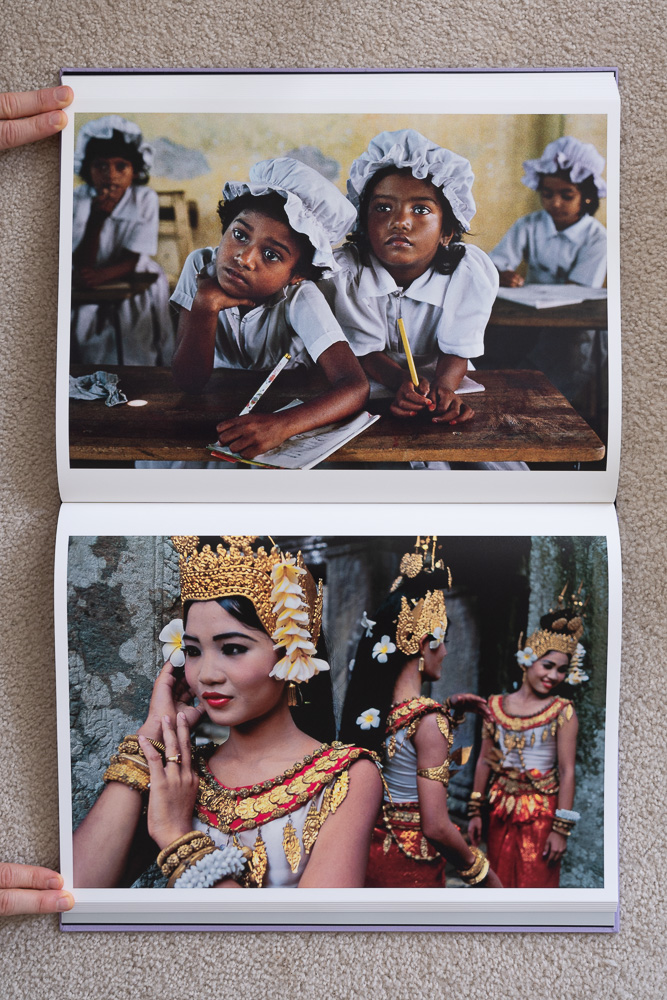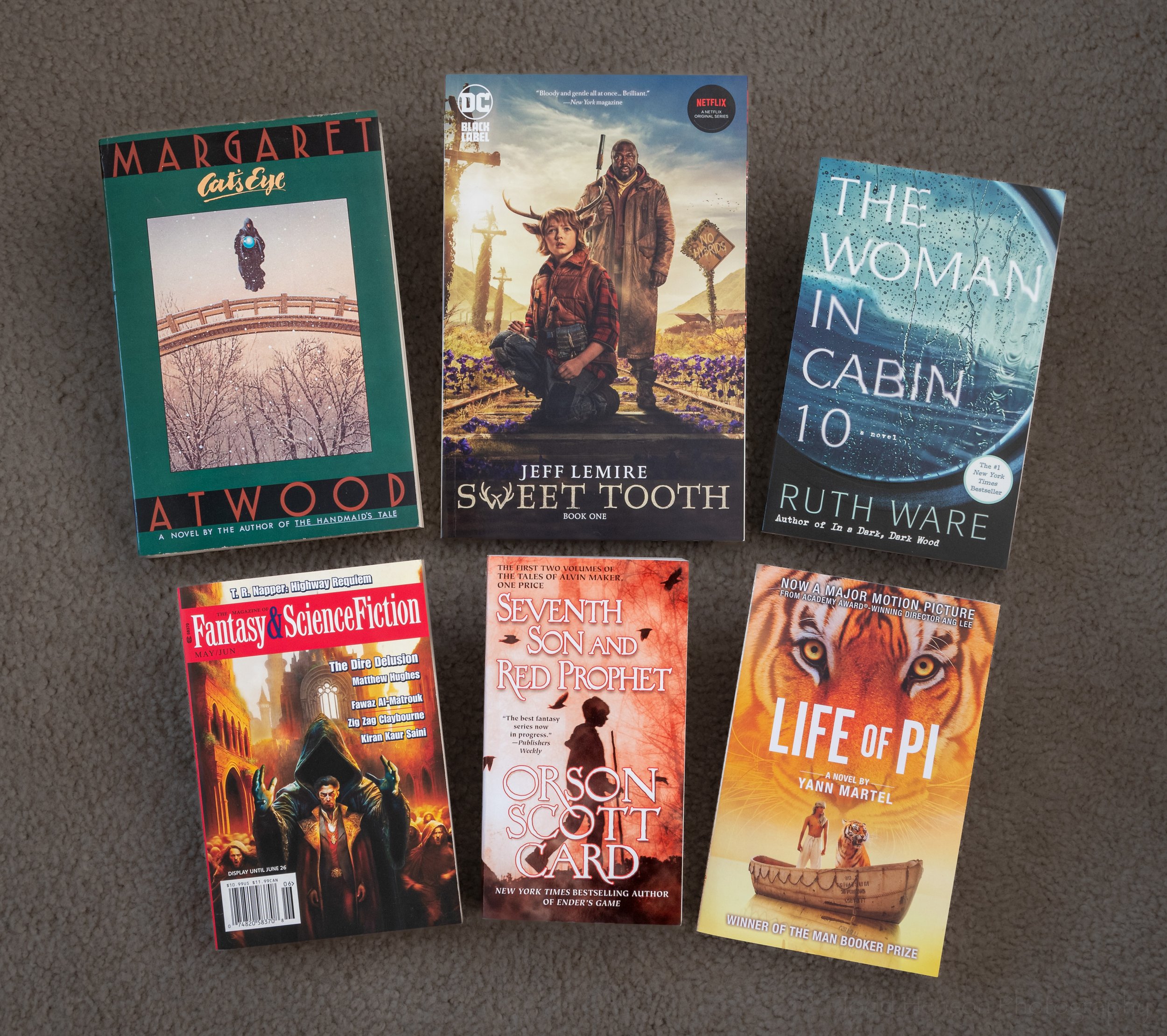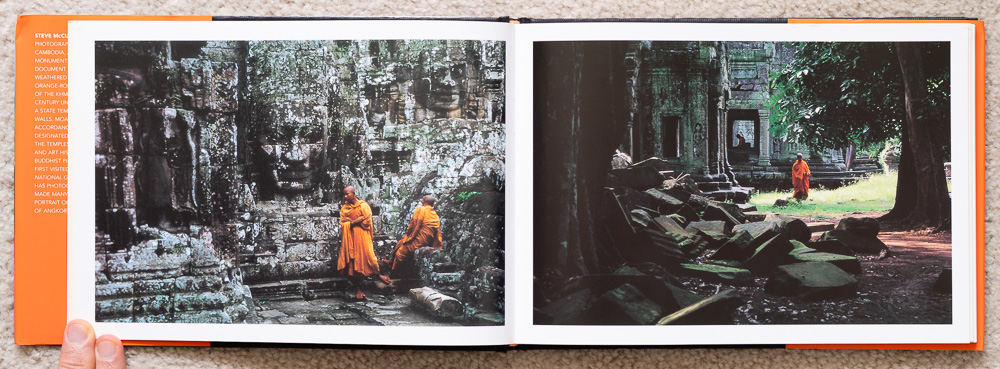This post contains affiliate links and I will be compensated if you make a purchase after clicking on my links. This is at no extra cost to you.
Limited edition of Steve McCurry: The Iconic Photographs, along with its slipcase.
Steve McCurry: The Iconic Photographs is an absolutely stunning collection of photographs by a photographer who has created a number of images that I would certainly consider iconic. He is probably best known for his photograph of an Afghan Girl, created in Peshawar, Pakistan in 1984. I remember when this graced the cover of National Geographic. I, as so many others, was immediately taken in by her piercing green eyes, and the green and red contrasts between her eyes, her clothing, and the background.
Steve McCurry: The Iconic Photographs. Afghan Girl, Peshawar, Pakistan, 1984.
Many of Steve McCurry’s most striking photographs are posed portraits of people. He does such a great job of conveying emotion in his portraits, of really bringing the people to life. Examples of this are his portrait of a Woman With Coral Earrings, created in Lhasa, Tibet in 2000, and of his portrait of a young Pilgrim at Kumbh Mela, created in Haridwar, India in 1998.
Steve McCurry: The Iconic Photographs. Woman With Coral Earrings, Lhasa, Tibet, 2000. Pilgrim at Kumbh Mela, Haridwar, India, 1998.
But McCurry is also a master of photographing street scenes of people going about their daily lives. There are stories in his photographs, as seen in Boy in Mid-Flight, created in Johdpur, India in 2007. Where is this boy running to? What is around the corner? I love the composition and the color contrasts.
Steve McCurry: The Iconic Photographs. Boy in Mid-Flight, Jodhpur, India, 2007.
In one photograph we see people walking down the flooded streets of Chandni Chowk in Old Delhi, India, while a street vendor tries to keep his goods dry. In another people walk down train tracks in Bangladesh. The folks on the train tracks all have similar colored clothing, but the person walking in the grass stands out for his more colorful shirt contrasted against the green grass and the blue storm clouds in the sky. We see school girls in Sri Lanka seemingly transfixed by their teacher. And we see dancers at Preach Khan in Angkor, Cambodia, wearing their colorful outfits of gold and red.
Steve McCurry: The Iconic Photographs. Chandni Chowk, Old Delhi, India, 1983. Train Track, Bangladesh, 1983.
Steve McCurry: The Iconic Photographs. Schoolgirls, Kegalle, Sri Lanka, 1995. Dancers at Preah Khan, Angkor, Cambodia, 2000.
As these sample images show, most of Steve McCurry’s images involve people, sometimes in portraits, sometimes busy going about their lives oblivious to the camera, other times in their environment but fully aware of the camera. In each photograph we get a short glimpse into one of the stories of their life, a brief but telling moment in time. Maybe it is a girl in her flooded front yard. Or a girl cooking in her home, with beams of light shining down from nearby windows. Or a man reading a newspaper while waiting for a train, shadows stretching across the ground. In each case we’re drawn into their world. It’s no wonder McCurry was such a frequent contributor to National Geographic.
Steve McCurry: The Iconic Photographs. A Girl in Her Front Yard, Bojonegoro, Java, Indonesia, 1983.
Steve McCurry: The Iconic Photographs. Girl Cooking, Uttarakhand, India, 2009.
Steve McCurry: The Iconic Photographs. Train Station Platform, Old Delhi, India, 1983.
I was fortunate to purchase the limited edition version of Steve McCurry: The Iconic Photographs, when it first came out from Phaidon Press. It is far and away the largest photography book I own, measuring about 15 x 20 inches. As seen in the samples it is a portrait format book, being taller than it is wide. This works perfectly for the portraits, displaying a single photograph on a page. It does mean, though, that landscape photographs span two pages.
Steve McCurry: The Iconic Photographs. Shikaras on Dal Lake, Srinagar, Kashmir, 1999.
Steve McCurry: The Iconic Photographs. Stilt Fishermen, Weligama, Sri Lanka, 1995.
Steve McCurry: The Iconic Photographs was republished in 2012 in a smaller, more affordable format, measuring about 11 x 15 inches, which I still consider a large format book. It is 272 pages in length and contains 164 photographs McCurry created between 1980 and 2009. The photographs stand on their own without any text to distract from them. In the back of the book are several pages with a small bit of info about each photograph.
I highly recommend this book. I think it’s a fantastic collection of Steve McCurry’s photographs, possibly the best out there. It would be a great addition to the library of any Steve McCurry fan, and would also be a fantastic introduction to his work.






















































